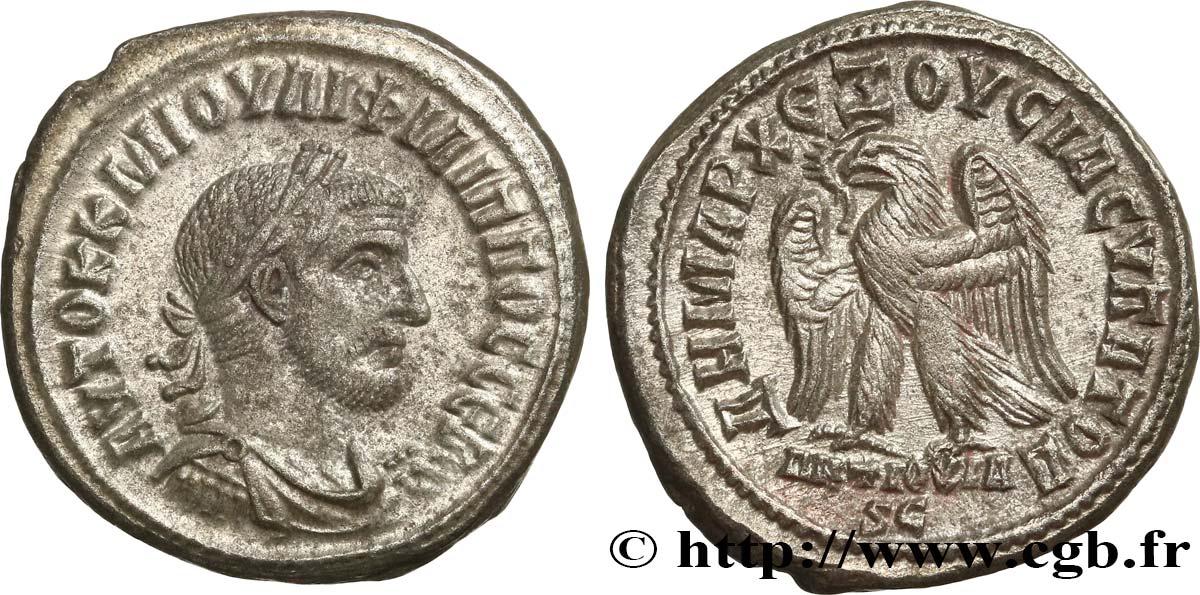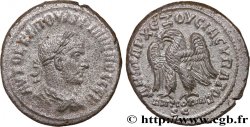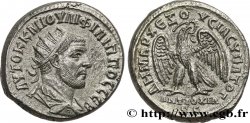bpv_311298 - PHILIPPUS Tétradrachme syro-phénicien
Not available.
Item sold on our e-shop (2024)
Price : 150.00 €
Item sold on our e-shop (2024)
Price : 150.00 €
Type : Tétradrachme syro-phénicien
Date: 249
Mint name / Town : Antioche, Syrie, Séleucie et Piérie
Metal : billon
Diameter : 28,00 mm
Orientation dies : 6 h.
Weight : 12,70 g.
Coments on the condition:
Belle frappe, belles surfaces, bons restes du brillant de frappe d’origine
Catalogue references :
Predigree :
Cet exemplaire, qui provient de la trouvaille dite de Jordanie 1930, est le 0438A_028 de la base TSP
Obverse
Obverse description : Buste lauré, drapé et cuirassé de Philippe Ier l’Arabe à droite, ptéryges de gauche et de droite visibles, vu de trois quarts en avant.
Obverse legend : AUTOK K M IOUL FILIPPOS SEB, (Autokratoros Kaisaros Markos Ioulios Filippos Sebastos)
Obverse translation : (L’empereur césar Marc Jules Philippe auguste).
Reverse
Reverse legend : ANTIOXIA / S|C À L’EXERGUE.
Reverse description : Aigle debout à gauche, les ailes largement déployées, tête à gauche et queue à droite, tenant une couronne feuillée dans son bec.
Reverse legend : DHMARC - EX OUSIAS UPATOD
Reverse translation : (Revêtu de la puissance tribunitienne / Consul pour la quatrième fois / avec l’accord du Sénat d’Antioche).
Commentary
Depuis la parution du Prieur, le type 438 a été scindé en deux groupes, le 438 qui présente un buste où l’on ne voit pas les ptéryges de gauche, et le 438A, où celles-ci sont plus ou moins visibles. Dans la base TSP maintenue par Michel Prieur, quarante-six exemplaires, dont six en musée, (ANS, deux à Yale, British Museum, Berne et Oxford, ex vente Rauch 40 (janvier 1988), n° 526) sont maintenant répertoriés pour ce type.








 Report a mistake
Report a mistake Print the page
Print the page Share my selection
Share my selection Ask a question
Ask a question Consign / sell
Consign / sell
 Full data
Full data









